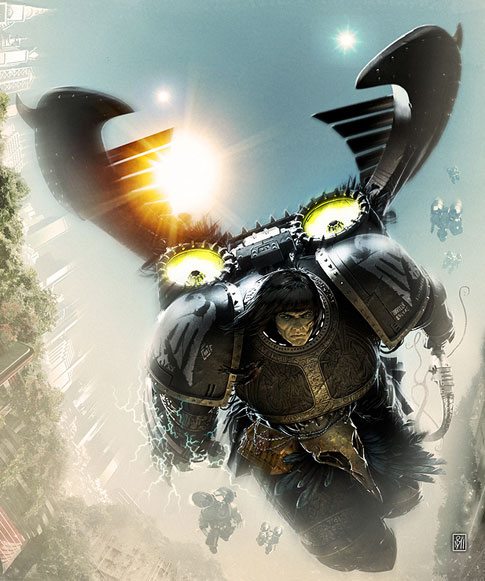
Apologies for the delay in this review, I know may narrative players have been clamoring for opinions on how the new campaign book will affect them and their campaigns. Well fear not dear readers I, your humble author, am hear to assuage your anguish. Let’s dive right in.

– Campaign Rules –
The set up for the campaign is probably one of the most comprehensive we have seen for 9th edition so far. GW decided to include an entire section focused on how to divide up teams for the event, recommending the defenders be Imperial, the attackers Chaos, and everyone else be “Raiders” basically allowing them to play as an unaligned faction. Unsurprisingly, these are not hard and fast rules but suggestions.
The book recommends breaking the campaign into three separate parts with each phase taking two weeks. They have also imparted a guide for scoring the impact of games with a sliding scale to reward players for participating in bigger battles.
For each phase they have designed universal rules to take effect in every battle, some are pretty powerful (for example for the first campaign phase no unit can advance). At the same time, they have also brought back one of the wonkiest parts of the old editions: Mysterious Objectives. For those of you who never played before 8th edition there used to be a rule that triggered the first time a model held an objective. The controlling player would roll on the table and apply the listed effect, some where good and randomly made your units able to shoot down flyers, while there was always the chance the objective would simply explode. They seem to have done away with the negative outcomes, and have shrunk the list down to a D3. Regardless, I am really glad to see them make a comeback.

At the end of each phase the teams score points based on how many games they won/participated in. The scoring is also on a sliding scale to make all the phases matter. They also added in a way to try and counter-act snowballing by giving players on the losing team for each phase addition Requisition Points. Another new facet is the “Secret Order” system which is rewards players for completing specific kinds of agendas. You get one per campaign phase, and you can choose or roll for it (as a GM I feel like forcing players to roll for it makes it more fun and challenging).
– Legendary Missions –
These are the old set-piece battles that have appeared in countless campaign books. I am particularly excited about the Rout on Okahrium mission as it represents an army conducting a fighting retreat. The true gem maybe the Desperation and Despair mission, I won’t spoil it, I will just share the deployment map.
– Crusade Specific Rules –
To go along with the campaign rules, they released a set of relics and other goodies specific to the campaign. Most are fairly tame and flavorful, and they are divided up into three groups: Imperium Relics, Chaos Relics, Non-Imperium and Non-Chaos Relics. Of the three I would say “Abbadon’s Writ” is the most powerful.
There are also new battle traits including one that will allow a character to always fight first (additionally there is an option for allowing a Titanic character to halve its power level for the purposes of strategic reserves. One step closer to Creed-ing Reaver Titans!)
One of the best things about the new relic though is they finally bridged the gap between the legendary relics and the base ones with a new set that can be given to Battle-Hardened units or better. There was always an odd space that these units fell into, not good enough for a great relic, but still better then a random weapon enhancement.
Finally, there is the Virulent Gift section. These work like mini relics or abilities. You buy them with Virulence points (found in Codex: Death Guard) and are one use items in a narrative game. After each gift is used it is removed from the roster until you pay 1 RP to add more. Some are pretty good (D3+3 MW on the closest enemy unit on a 2+) others are more tame but they seem decent for the RP cost.
– Final Thoughts –
To be honest I kinda expected GW to phone it in here with the narrative rules. I expected them to rely on the competitive crowd to carry the sales. However, there is some fun stuff in here, even if you do not want to play this specific campaign. The idea of having rules for each phase is a fun twist (even if most of your players will forget) and the legendary missions sound chaotically amusing. Overall, it is exciting to see GW push the boundaries of the crusade system and provide more niches and twists. I am a little concerned about some of the upgrades being too powerful so any GMs may want to gate them off early on.
And remember, Frontline Gaming sells gaming products at a discount, every day in their webcart!
